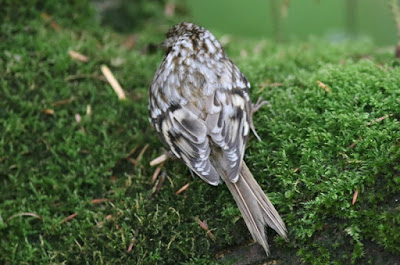It was one of those crisp early winter days today. Non-stop sunshine from early on right through until it got dark. Never ideal for gulls, but it turned out not to be all that bad. It started off with three BTO metal ringed Black-headed Gulls on Greenland Dock, Rotherhithe - a recent thing of mine, when times are quiet, is to get the codes of birds with just metal rings! That's five for the weekend now - three British, one Belgian and one German.
After a quick look at the beach by the Hilton hotel where a regular Norwegian Black-headed Gull was present, I headed over to the other side of the river and to Thames Barrier Park. I decided to just pay for the hour's parking initially, given how poor it has been recently and the omens didn't look good again - the park gates were locked! And so I just decided to chuck the bread out by the barrier itself and, after a couple of minutes, this lovely (unringed) 1st-winter Caspian Gull came in: -
 |
| 1st-winter Caspian Gull Thames Barrier Park, London 19th November 2017 |
A decent looking bird, that perhaps comes from further east than the German swarm - pure speculation I know, but this bird felt good in all respects. This was the first Caspian Gull here for almost a month, and number ten for the season (July to June) for me, Jamie and Dante, and to be honest it was a bit of a surprise as there were probably no more than 50 large gulls present. Josh J has been bemoaning the lack of numbers in West London too, and I presume that London has lost its gulls due to the lack of easterlies and no cold weather so far this autumn/winter. So I'll count my lucky stars that this crisp beaut came into the loaves this morning.
Meanwhile, I had another check this afternoon of Burgess Park for the returning Med Gull - still no sign, but loads of Black-headed Gulls and a Little Grebe was nice too. It often doesn't come back until December so all hope isn't lost yet.



















































